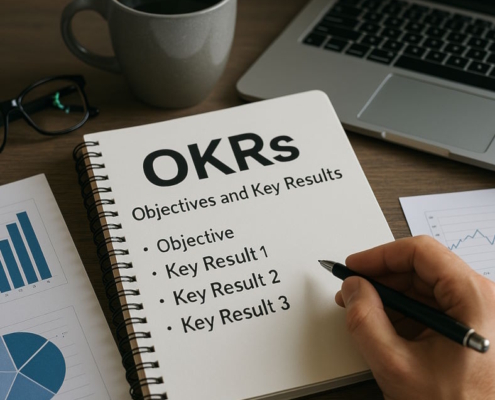How Much Profit Should a Small Business Make?
Generally, a small business should have a profit margin of 10% of gross revenue. Many small businesses make an estimated $70,000 to $120,000 annually in profits.
By Brad Nakase, Attorney
Email | Call (888) 600-8654
The profit margin for a small business depends on its size and what it does. Many restaurants aim for a profit margin of 10% to 15%. Retailers aim for a profit margin of 25% to 35%. The profit margin translates to dollars amount depending on the business size.
In this article, our California business attorney discusses how much profit a small business makes as follows:
What Does Profit Margin Mean?
For small businesses, a profit margin is a way of comparing a business’ profits and revenue. There are three major metrics by which profit margin is measured. The first of these is gross profit margin, which is the cost of goods sold (COGS) subtracted from the total revenue. The second is the operating profit margin, which is the total revenue minus operating costs and the cost of goods sold. The third is net profit margin, which is all expenses subtracted from total revenue. These expenses include interests and taxes.
Below, we will discuss formulas used to calculate profit margin, as well as provide illustrative examples of these formulas in use.
What Is the Formula for Profit Margin?
To analyze a company’s profitability, one should consider three main margin ratios. These are net, operating, and gross. The following is a summary of each of these profit margin formulas.
- Net profit margin = net income / revenue x 100
- Operating profit margin = operating profit / revenue x 100
- Gross profit margin = gross profit / revenue x 100
Example: Jenny owns a jewelry store in Los Angeles. She is examining her company’s income statement for the year 2021. The store’s total revenue for the year is $85,000. The gross profit is listed as $55,000. The net income comes out to $14,000. Using these values, Jenny wants to calculate her business’ gross profit margin and net profit margin. How should Jenny calculate these numbers?
To calculate the gross profit margin, Jenny should take the gross profit number and divide it by the revenue.
$55,000 / $85,000 = 64.7%
Therefore, the gross profit margin is 64.7%.
To calculate the net profit margin, Jenny should take the net income and divide it by the revenue.
$14,000 / $85,000 = 16.5%
Therefore, the net profit margin is 16.5%.
As can be seen in this example, there is a big difference between the gross profit margin and the net profit margin: 64% versus 16%.
What Profit Margin Is Considered Good?
While a good profit margin will depend on the specific industry, generally a ten percent net profit margin is treated as normal. A twenty percent margin is viewed as a high number, and therefore good. However, a five percent margin is considered low, and sub-optimal. It is important to remember that these numbers vary according to field and the size of a company, as well as other factors. Therefore, if one’s company has a profit margin of 7%, this is not necessarily bad. It is therefore advisable to understand the standards of one’s industry as well as other variables that affect one’s business.
What Is the Excel Calculator for Profit Margin?
The Corporate Finance Institute provides a profit margin Excel calculator, which allows a business owner to input values over a period of five years. On the Excel page, the user can enter their own values in the boxes with blue lettering or light gray shading. The areas with black lettering are reserved for formulas and do not need editing.
If a user enters a business’s revenue, operating expenses, and cost of goods sold, the calculator will produce margins for EBITDA, Net Profit, and Gross Profit. One should recall that EBIT, or earnings before interest and taxes, means the same thing as Operating Profit. EBITDA, by contrast, is more related to Net Profit.
The user is able to influence the calculator by adding or deleting rows as needed, depending on available information. For instance, a user can add more lines to cover “Wages.”
What Are Some Other Business Performance Metrics?
Assessing a business requires more than simply looking at profit. It also involves studying financial metrics, ratios, as well as various other types of performance. Analysts use several metrics to perform a comprehensive and detailed study of a company. They examine the following areas:
- The growth rate of revenue
- Cash flow
- Return on Assets (ROA)
- Return on Equity (ROE)
- Dividend Yield
- Internal Rate of Return (IRR)
- Net Present Value (NPV)
Depending on the company and specific industry, these metrics will vary in terms of importance and usefulness. For example, Company A may find that ROE is critical in analyzing performance. Company B, however, may decide that Cash Flow Yield is a better indicator.
How does one decide which metrics are important? Key metrics often show a business’s performance to be significantly different than that of its competition. In essence, it is the most telling metric, giving the clearest answer.
The business owner who studies these metrics and profitability margins, as discussed above, will be well-prepared to perform financial analyses of their company.
Have a quick question? We answered nearly 2000 FAQs.
See all blogs: Business | Corporate | Employment Law
Most recent blogs:
Contact our attorney.































